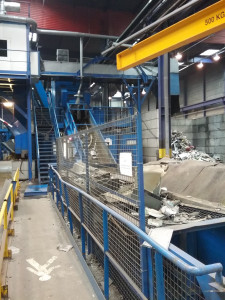At around 7:10 a.m., a crusher exploded at a plant where waste electrical and electronic equipment (WEEE) are processed. Technicians used fire extinguishers to put out a fire that broke out on an auxiliary motor. The fire alarm was manually triggered and 43 employees were evacuated.
Sixteen people (one seriously injured and 15 slightly injured) were taken to hospital and released the same day. The crusher was damaged and most of its metal guards were blown off. The building was not damaged. The plant was shut down and 20 workers were temporarily laid off. WEEE was diverted to another of the group’s plants.
The explosion occurred 10 minutes after the crusher was turned on. Beforehand, maintenance crews had readied it for restarting after the nightly shutdown. An inspection of the crusher found that the explosion was caused by a gas cylinder contained inside a heatsink and which had been fed into the crusher along with other waste by the conveyor belt. The crusher’s manufacturer confirmed that the damage was typical of a gas explosion.
The inspection found that the crusher and its safety devices had not been regularly inspected by an accredited external body, that only in-house preventive maintenance had been performed on the crusher and its vents, and that there were no written and checked maintenance procedures for the crusher or its safety devices.
The lack of regular inspections of the safety devices may have contributed to exacerbating the consequences of the event, as the shock wave was intensified by failure of the rupture discs (the released energy was absorbed by the crusher itself instead of by the foil discs and the housings). A formal notification order was issued.




